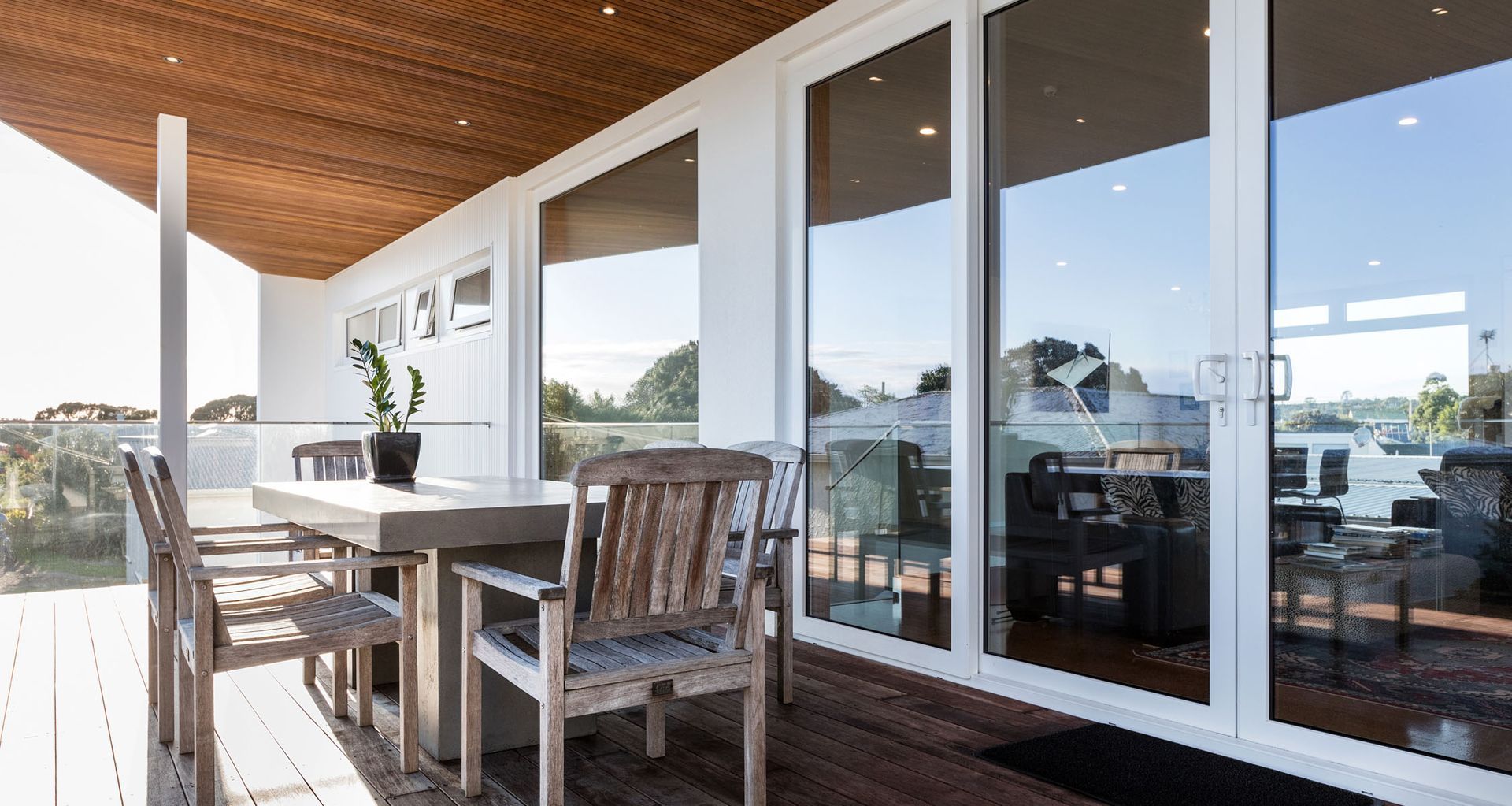Warm Windows: Why uPVC Is the Best Option for Your Passive House

What makes a window “warm”?
A “warm” window minimizes heat transfer and cold bridging. It combines three elements:
- A thermally efficient frame that resists heat conduction.
- High-performance glazing (usually double or triple glazed with low-emissivity coatings and gas fills).
- Tight seals and precise installation that prevent air leakage.
If any of those fail, your house loses energy — often through the windows. So the right frame material matters as much as the glass.
Why uPVC (PVC-U) is an excellent choice for passive houses
1. Great thermal performance without complex thermal breaks
uPVC is a poor conductor of heat compared to metals like aluminium. That low thermal conductivity means uPVC frames naturally reduce heat loss and cold bridging — a huge plus for passive house targets. When combined with multi-chamber profiles, insulated cores, and good glazing, uPVC window systems routinely achieve the low U-values passive houses require.
2. Cost-effective high performance
Passive house projects need exceptional windows, but budgets matter. uPVC offers an outstanding cost-to-performance ratio: you can reach very low whole-window U-values and airtightness at a lower price than many timber or thermally-broken aluminium systems. That means more of your budget can go into higher quality glazing or better ventilation, rather than blowing the entire budget on frames.
3. Low maintenance and long lifespan
uPVC doesn’t rot, warp, or need repainting. For busy homeowners or remote holiday homes, the low-maintenance nature of uPVC — simply clean occasionally with mild soap and water — is a big practical advantage. Modern uPVC profiles are engineered to last decades without performance degradation if installed correctly.
4. Excellent airtightness and weathering
Well-designed uPVC frames, combined with quality seals and hardware, create tight joints and reliable compression seals. That supports the airtightness goals of a passive house and helps prevent drafts, condensation risk, and water ingress over time.
5. Design flexibility and performance options
Today’s uPVC systems come in a wide range of profiles, colours, and hardware options — including wood-effect foils and slim sightlines — so you don’t have to compromise aesthetics for performance. You can pair uPVC frames with triple glazing, low-e coatings, argon/krypton fills, and warm-edge spacers to reach excellent whole-window results.
6. Recyclability and evolving sustainability
High-quality uPVC is recyclable and many manufacturers operate take-back and recycling programmes. When compared across full-life metrics — durability, low maintenance, and thermal energy savings over decades — uPVC can be a competitive environmental choice, especially when sourced from reputable suppliers.
How uPVC compares to other common frame materials
- Timber: Timber looks beautiful and has decent thermal performance, but it needs regular maintenance (painting/staining) and can be vulnerable to moisture and pests if not cared for. Timber frames with thermal upgrades can match uPVC thermally, but usually at higher cost and upkeep.
- Aluminium (with thermal break): Slim sightlines and structural strength are aluminium’s strengths. Thermally broken aluminium can achieve passive-house performance, but those systems are typically more expensive and rely on an engineered thermal break — a potential weak point if poorly manufactured or installed.
- Composite frames: These combine timber and aluminium or other cores. They can perform very well but are often more costly. uPVC gives similar thermal benefits for less money in many cases.
Features to specify for passive house uPVC windows
If you decide on uPVC, ask for or specify:
- Multi-chamber uPVC profiles for improved insulation.
- Triple glazing with low-E coatings and argon/krypton fill for low center-of-glass U-values.
- Warm-edge spacers (not aluminium) to reduce edge heat loss and condensation.
- Certified whole-window U-values and Psi values from the manufacturer (not just glass numbers).
- High-quality compression seals and weather gaskets for airtightness.
- Passive House Institute (PHI) or equivalent certification where possible.
- Professional installation by a contractor who understands airtightness, thermal bridging, and correct flashing/sealing techniques.
Installation matters — don’t skimp
Even the best uPVC window will underperform if poorly installed. Proper detailing of the junction between wall and window (vapour control, thermal continuity, drainage, and airtightness) is critical in a passive house. Work with installers experienced in energy-efficient building standards and request blower-door testing and thermal imaging as part of quality assurance.
Common myths, debunked
- “uPVC looks cheap.” Modern profiles, wood-effect foils, and slimline systems give designers plenty of options.
- “uPVC isn’t green.” While material production has impact, the long service life, low maintenance, thermal savings over decades, and recycling programmes mean uPVC can be part of a low-energy, low-impact build when chosen responsibly.
- “Only timber has character.” Architectural character comes from design choices — proportion, mullion layout, hardware — not only material.
Conclusion
For passive houses, windows are strategic components: they must insulate, admit passive solar gain when wanted, stay airtight, and last. uPVC provides a strongly competitive balance of thermal performance, affordability, durability, and low maintenance. When paired with high-performance glazing, warm-edge spacers, and professional installation, uPVC windows are a pragmatic and effective choice to help your passive house hit its energy and comfort goals.
